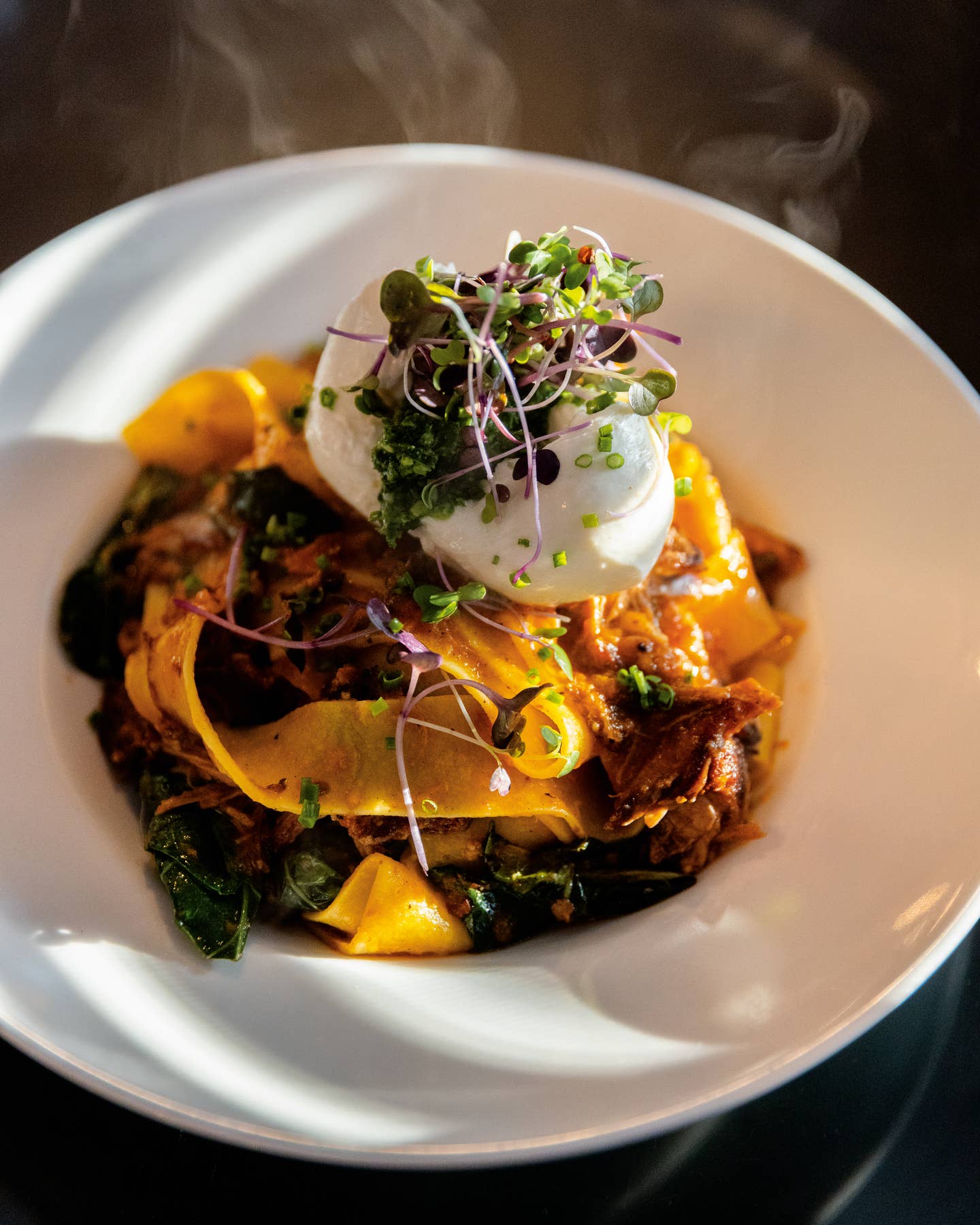
3 Timeless Butter Techniques to Elevate Your Home Cooking
These back-pocket tricks using European butter will take all your sauces and soups to the next level.
It’s fair to say we here at SAVEUR have an obsession with French butter. Whether laminated between sheets of pastry dough, enveloping a piquant French breakfast radish, or whisked into a sauce atop a pan-seared fish—nothing quite compares to its rich and luxurious flavor.
Quality counts, so we often opt for European butter from France, with its high relative fat content and a distinct depth of flavor enhanced by the culturing process. Butter, at its most basic, is an emulsion of water in fat; most of the domestically produced stuff cuts out at 80 percent fat. French butter, by comparison, contains a minimum of 82 percent, and can go up to 85. This change may seem subtle, but the difference in richness is noticeable. Combine that with the slightly tangy umami flavor that comes from culturing—a process in which the cream is fermented beforehand—and it’s no wonder the French are known to slice it atop their bread like cheese (an approach we fully endorse, by the way).
The French have also long put butter to work in the kitchen, not just as a spread, but also as a foundational ingredient in many classic recipes. Béchamel—the iconic French mother sauce—starts with butter, as does hollandaise and velouté. But there are a few even simpler ways we love to cook with French butter. Read on for three chef-recommended techniques to bring this essential ingredient into your culinary toolkit.
Quickly thicken your sauces and stews with beurre manié.
Beurre manié, literally “butter by hand” or “kneaded butter,” is a simple, last-minute helper for thickening sauces, soups, and stews. Similar to a roux, it’s a mixture of butter and flour, but rather than being melted and cooked directly over the heat, the two are kneaded together in equal portions to form a paste, which can then be whisked into simmering liquid to add a velvety texture and richness, without altering the overall flavor. (As usual for cooking, opt for unsalted French butter to ensure you don’t accidentally oversalt your dish.) Beurre manié is particularly handy for fixing sauces or soups that look a bit thin towards the end of cooking, or for turning pan juices into a silky smooth sauce.
According to Dr. Rollie Wesen, executive director of the Jacques Pépin Foundation and culinary professor at Johnson & Wales University, “the cool thing about beurre manié is how flexible it is.” He adds: “At home, I’ll make half a pound of butter into beurre manié, and then shape it into little nuggets and put them in a bag in the freezer. Whenever I want just a tiny bit, maybe to thicken a pan sauce for chicken breast or a piece of fish, I don’t have to go through the whole process again. It can just go directly from the freezer into the pan.”
Elevate and brighten fish and vegetables with beurre blanc.
Beurre blanc, or “white butter,” is a classic French sauce known for its balance of richness and acidity; emulsified with white wine, shallots, and, sometimes, depending on the chef, vinegar, this buttery sauce pairs excellently with fish and vegetables.
Butter, Wesen points out, is an emulsification of water in oil. French-style butter is 82 to 85 percent fat, (with about 2 to 5 percent milk solids), and the rest is water, carefully suspended in a smooth, spreadable emulsion. For beurre blanc, Wesen says, “you reverse that. It’s an emulsification of oil in water.” When adding butter a pat at a time to a reduction of wine and aromatics, you’re looking for a very thick reduction, with very little moisture. “Your butter is bringing 10 to 15 percent water with it,” he says, “so starting with the tiniest amount of water possible in the pot will give your beurre blanc a thick and luxurious viscosity.”
At the Post House in Charleston, South Carolina, chef Robin Hollis replaces the white wine in her beurre blanc with champagne for a luxe upgrade: “We swap out the vinegar for lemon juice, too, for a mellower acidity,” she says, “and serve it over an egg yolk raviolo topped off with a big dollop of caviar.”
Lend a toasty note to sauces and sweets with beurre noisette.
Perhaps the most recognizable of the three, beurre noisette (brown butter, or literally “hazelnut butter,” likely named for the nutty aroma and color) is a technique that features and enhances the milk solids present in the butter, which are caramelized to a deep brown for an alluring toasty flavor that shines in sauces and baked goods.
Melted butter is cooked gently until its water content has entirely evaporated, leaving only fat and the residual milk proteins behind; the latter start to caramelize quickly. “You can’t brown anything until all the water is gone,” says Wesen. “As long as there’s water in there,” he adds, “the maximum temperature you can get to is 212 degrees Fahrenheit. Browning reactions don’t start until 280 degrees Fahrenheit.” As long as the butter is sizzling, water is still evaporating. “But as soon as the water is gone,” says Wesen, “the temperature of the fat goes up exponentially.” This is why it can be easy to accidentally burn beurre noisette if you’re not paying attention. Lower the heat and start stirring frequently with a wooden spoon as soon as the butter stops sizzling, then quickly transfer the beurre noisette to a heatproof bowl to stop the cooking as soon as it reaches the desired color.
At Troubadour in Healdsburg, California, chef Sean McGaughey sometimes adds a little heavy cream to his brown butter sauces, amping up the amount of milk solids for even more of that golden-brown goodness.
Head to TasteEurope.com for more delicious recipes, tips, and tricks for using French butter.
Funded by the European Union. Views and opinions expressed are however those of the author(s) only and do not necessarily reflect those of the European Union or FranceAgriMer. Neither the European Union nor FranceAgriMer can be held responsible for them.










